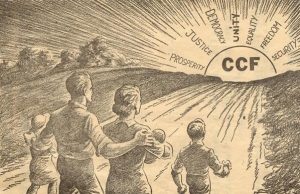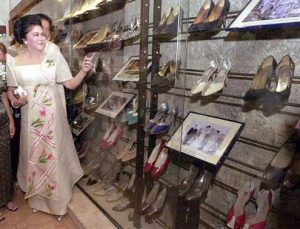8.4 Theoretical Perspectives on Social Inequality

Learning Outcomes
By the end of this chapter, you’ll be able to:
- Understand and apply functionalist, critical sociological, and interpretive perspectives to social inequality.
Introduction
Social inequality is defined by unequal access to rewards in society. Research has shown a growing gap in wealth and income between the economic elites and all the other segments of the population in Canada and elsewhere over the last 40 years (Osberg, 2021; Alvaredo et al., 2018). In 2021, Forbe’s annual list of global billionaires increased by 660 to a new record of 2755 individuals, during a global pandemic which had placed severe economic hardship on the majority of the world’s population. Together their wealth added up to $13.1 trillion (US), up $5 trillion from 2020 (Dolan, 2021). In 2020, Oxfam calculated that the world’s 2,153 billionaires had more wealth than lowest 4.6 billion people combined, or more than 60 per cent of the planet’s population (Lawson et al., 2020). Similarly, Canada’s top 20 billionaires had become $37 billion wealthier over the first 6 months of the pandemic (CCPA, 2020).
What accounts for social inequality? In sociology, the issue is studied from various points of view. Structural functionalists examine the purpose or social function of wealth discrepancies, while critical sociologists examine the accumulation of wealth as a product of the unequal distribution of power in society. Interpretive sociologists are interested in how the meanings of social inequality, status and class are constructed and deployed in the conduct of everyday life. The question of how to account for social inequality opens up several debates in sociology.
Structural Functionalism

In sociology, the structural functionalist perspective examines how society’s structures operate to maintain the overall functioning of the system. Different aspects of society like social inequality persist because they serve a needed purpose. What is the social function of social inequality?
In 1945, sociologists Kingsley Davis (1908–1997) and Wilbert Moore (1914–1987) put forward the Davis-Moore thesis, which argued that the greater the functional importance of a social role, the greater must be the reward. The theory argues that systems of social stratification have a social function, which reflects the inherently unequal value of different types of work. Certain tasks in society are more valuable than others. Qualified people who fill those positions must be rewarded more than others. Therefore, the function of stratification or social inequality in societies is “the requirement faced by any society of placing and motivating individuals in the social structure. As a functioning mechanism a society must somehow distribute its members in social positions and induce them to perform the duties of these positions.” Societies do this through the unequal distribution of rewards, esteem and social prestige between different social positions, which ensures that “the most important positions are conscientiously filled by the most qualified persons” (Davis and Moore, 1945).
Davis and Moore (1945) presented this theory of stratification as universally applicable to all societies. They argued that “Every society … must differentiate persons in terms of both prestige and esteem, and must therefore possess a certain amount of institutionalized inequality” (Davis and Moore, 1945). However, how inequality manifests differs from society to society. To try to explain this, they outlined two principles to explain variations between systems of stratification in different types of society: (1) the functional importance of a social position for that society, and (2) scarcity of personnel due to the level of specific skills or capacities required for the position.
So according to Davis and Moore, a firefighter’s job is both more functionally important and more skilled than, for instance, a grocery store cashier’s job. The cashier position does not require the same skill, commitment and level of training as firefighting. Without the incentive of higher pay and better benefits, why would someone be willing to rush into burning buildings? If pay levels were the same, the firefighter might as well work as a grocery store cashier and not risk their life. Davis and Moore believed that rewarding more important and scarce work with higher levels of income, prestige, and power encourages people to go through lengthy training procedures and to work harder and longer. The more skill required for a job, the fewer qualified people there would be to do that job. Certain jobs, such as cleaning hallways or answering phones, do not require much skill. The employees do not need a university degree. Other work, like designing a highway system or removing a cataract, requires immense skill and years of training.
In 1953, Melvin Tumin (1919–1994) countered the Davis-Moore thesis in Some Principles of Stratification: A Critical Analysis. Tumin (1953) questioned what determined a job’s degree of functional importance. The Davis-Moore thesis does not explain why a media personality with little education, skill, or talent becomes famous and rich on a reality show or a campaign trail. Similarly, during the global pandemic of 2020-2021, it was revealed that some of the poorest paid members of society like store clerks and cashiers were in fact the most functionally “essential workers” needed to keep society operating in a time of crisis and lock-down. The thesis also does not explain inequalities in the education system, or inequalities due to race or gender. Contra Davis and Moore, Tumin believed social stratification was dysfunctional because it prevented qualified people from attempting to fill roles. For example, an underprivileged youth has less chance of becoming a scientist, no matter how smart they are, because of the relative lack of opportunity available.
The Davis-Moore thesis, though open for debate, was an early attempt to explain why stratification exists. The thesis states that social stratification is necessary to promote excellence, productivity, and efficiency, thus giving people something to strive for. Davis and Moore believed that the stratification system serves society as a whole because it allows everyone to benefit from a functional economy, even if they benefit unequally.
Conflict Theory

Conflict theorists are deeply critical of social inequality, asserting that it benefits only some people not all of society. For instance, to a critical sociologist it seems problematic that after a long period of increasing equality of incomes from World War II to the 1970s, the wealthiest 1 per cent of income earners have been increasing their share of the total income of Canadians from 7.7 per cent in 1977 to 13.8 per cent in 2007 (Yalnizyan, 2010). In 1982, the median income earner in the top 1 per cent of incomes earned seven times more than the median income earner in the other 99 percent. In 2010, the median income earner in the top 1 per cent earned ten times more. Moreover, while the median income for the top 1 per cent increased from $191,600 to $283,000 in constant dollars (i.e., adjusted for inflation), the median income for the bottom 99 per cent only increased from $28,000 to $28,400 (Statistics Canada, 2013). Canada’s richest 1 per cent took almost a third (32 percent) of all growth in incomes 2007 (Yalnizyan, 2010).
Advocates of conflict theory view this “great U-turn” in income equality over the 20th and 21st centuries as a product of both the ability of corporate elites to grant themselves huge salary and bonus increases and the shift toward neo-liberal public policy and tax cuts (see Chapter 4. Society and Modern Life). Rather than creating conditions in which wealth trickles down, tax cuts and neo-liberal policies tremendously benefit the rich at the expense of the poor. This is an example of the way that stratification perpetuates inequality. Contrary to the analysis of functionalists, huge corporate bonuses continued to be awarded even when dysfunctional corporate and financial mismanagement of the economy led to the global financial crisis of 2008. Nor is it the case that corporate elites work harder to merit more rewards. Over the period of increasing inequality in income, the only group not working more weeks and hours in the paid workforce is the richest 10 per cent of families (Yalnizyan, 2007). Critical sociologists argue that the functionalist explanation of inequality cannot account for the growing gap of wealth and income inequality over the last 40 years. Social functions and scarcity of personnel remain relatively unchanged through this period, whereas the unique historical configuration of globalization, neo-liberal policy, new technologies and markets and the decline of labour unions has enhanced the power of the owning classes.
Conflict theorists try to bring awareness to the structural nature of social inequalities, such as how a rich society can have so many poor members. The work of Karl Marx has been an important resource in this analysis. In the 19th century, Marx analyzed the way the owning class or capitalists accumulated profit and wealth in the new industrial economies, while working-class proletarians experienced deep exploitation, alienation, and misery (Marx, 1848). For Marx, differences of wealth and power were products of class structures and class power rather than the qualities of individuals. In particular, ownership and control over private property or capital defined where individuals stood within the class structure and conferred great power on the owners while dispossessing the power of wage earners. He also predicted that the growing collective impoverishment of the working class would lead them, through the leadership of unions, to recognize their common class interests. A common class “consciousness” uniting different types of labour would lead to the revolutionary conditions whereby the working class could remove their “fetters” and overthrow the capitalists. Marx imagined that with the abolition of private property (i.e., privately controlled capital), collective ownership of the means of production would end class conflict forever. A “communist” society that abolished the private ownership of the means of production would remove a key non-democratic source of power and become a true democracy.
Symbolic Interactionism
Within symbolic interactionism, determining the meanings of social inequality, status and class for individuals is key to being able to explain the nature of social interactions and social identities. The distribution of privileges in society is something that can be objectively measured by various indicators such as income, class position, and surveys of status, etc., but its role in every day life is a matter of lived experience. The meanings attributed to privilege can be examined at a micro and macro level in interpretive sociology.
Symbolic interactionism is a paradigm that uses everyday micro-level interactions of individuals to explain the operation of society. This analysis strives to explain how people’s social standing affects their everyday interactions. For example, Erving Goffman (1967) describes the elaborate rituals of deference that come into play when people recognize they have a difference in status. Deference includes ceremonial and symbolic acts and events “by which appreciation is regularly conveyed to a recipient,” including avoidance and presentation rituals.
Avoidance rituals are practices people use to keep both a physical and social distance from status superiors. These include the use of politeness, formality and terms of respect. Status or honour places an “ideal sphere” of inviolability around the privileged individual, which is guarded by a “system of deferential stand-off arrangements.” For intimates this sphere can be violated more or less freely, like a mother wiping her child’s nose, but the greater the status difference, the more this distance is protected by extensive and elaborate taboos against contact. Use of avoidance rituals can therefore be used as a social indicator of status differences in a society. On the other hand, presentation rituals are practices by which individuals display the esteem they hold for others and indicate how they will treat them in an interaction. These include interactions involving salutations, invitations, compliments, and minor services. Noticing someone’s new hair style or clothes with a compliment, regardless of what one might actually think about the change, is a kind of group acknowledgement of the new status claimed or undertaken by the recipient. Presentation rituals concretely demonstrate a person’s appreciation for the recipient, but as Goffman notes, to the degree that they violate a recipient’s privacy or reserve by commenting on personal matters there is an awkward conflict between the two types of deference ritual in interactions between people of unequal status.
In most communities, people interact primarily with others who share the same social standing, which may account for why structures of inequality persist through time. It is precisely because of social stratification that people tend to live, work, and associate with others like themselves; people who share their same income level, educational background, or racial background, and even tastes in food, music, and clothing. The built-in system of social stratification groups similar people together. George Homans’ (1961) examined the interactions between students at the New York State Training School for Girls to try to explain this phenomena from a micro-level perspective. He developed the concept of social exchange as the explanation for why the girls tended to spend their leisure time with status equals rather than with superiors or inferiors.
Homans’ exchange theory suggests that human behaviour can be modeled on the basis of calculated social exchanges of resources including tangible gifts, but also more intangible resources like favours, time, attention, etc. The principle is that a norm of reciprocity governs exchanges, meaning that, in an equal relationship, the gifts given equal the gifts received. Inequality in status is therefore understood as a product of unequal exchanges of gifts: there are net creditors and debtors in relationships. If spending time with a person is a form of gift giving, then persons of higher status give more than persons of lower status because their time is considered to be more valuable. Therefore, for the girls at the school and others, people tend not to spend time with people of either higher or lower status because it is difficult to feel comfortable when one is aware of being a either debtor or creditor in the relationship (or is uncertain of ones status with respect to the other).

Symbolic interactionists also note that people’s appearance reflects their perceived social standing. Housing, clothing, and transportation indicate social status, as do hairstyles, taste in accessories, and personal style. On a broader, macro-scale of interpretive sociology, Pierre Bourdieu’s (1930–2002) concept of cultural capital suggests that the cultural “assets” embodied in people’s appearance, such as education and taste, are accumulated and passed down between generations in the same manner as financial capital or wealth (1984). This capital marks individuals from an early age by such things as knowing how to wear a suit or having an educated manner of speaking. In fact the children of parents with a postsecondary degree are 60 per cent likely to attend university themselves, while the children of parents with less than a high school education have only a 32 per cent chance of attending university (Shaienks & Gluszynski, 2007). This relates back to Bourdieu’s concept of habitus. Habitus is in a sense the physical embodiment of cultural capital, the deeply ingrained habits, skills, and dispositions that people possess due to the cultural capital inherited through their family upbringing and location in the social hierarchy.
Cultural capital is capital also in the sense of an investment, as it is expensive and difficult to attain while eventually “paying off” by providing access to better occupations, financial rewards, life styles, health and privileges. Bourdieu argued that the privilege accorded to those who hold cultural capital is a key means of reproducing the power of the ruling classes. People with the “wrong” cultural attributes have difficulty attaining the same privileged status or the same ability move freely within a social milieu. Cultural capital becomes a key measure of distinction between social strata. For example, cultural capital and habitus also apply to people’s “taste” in cultural objects such as art, food, and clothing. Matters of taste are often key markers of distinction, which people detect in each other almost immediately.
Habitus
The French sociologist Pierre Bourdieu (1930–2002) defined habitus as the deeply-seated schemas, habits, feelings, dispositions, and forms of practical know-how that people hold as a result of living in a specific social milieu or context (Bourdieu, 1990). It is the way a person of a particular background perceives and reacts to the world. More technically, it is “the way society becomes deposited in persons in the form of lasting dispositions, or trained capacities and structured propensities to think, feel, and act in determinate ways, which then guide them in their creative responses to the constraints and solicitations of their extant milieu” (Wacquant, 2004). Bourdieu often referred to it as one’s “feel for the game,” to use a sports metaphor. Choices are perhaps always “free” in some formal sense, but they are also always situated within one’s habitus.
How are the different lifeworlds or habitus distributed in society so that some reinforce patterns of deprivation while others provide the basis for access to wealth and power? As Bourdieu pointed out, habitus is so deeply ingrained that we take its reality as natural rather than as a product of social circumstances. This has the unfortunate effect of justifying social inequalities based the belief that the privileged groups of the world were naturally gifted and predisposed for success when in fact it is success itself that is “predisposed” by underlying structures of power and privilege.

In the Theory of the Leisure Class (1899), Thorstein Veblen (1857-1929) described the activity of conspicuous consumption as the tendency of people to buy things as a display of status rather than out of need. Conspicuous consumption refers to buying certain products to make a social statement about status. Carrying pricey but eco-friendly water bottles could indicate a person’s social standing. Some people buy expensive trendy sneakers even though they will never wear them to jog or play sports. A $17,000 car provides transportation as easily as a $127,000 Tesla Model S, but the luxury car makes a social statement that the less-expensive car can not live up to. All of these symbols of social inequality are worthy of examination by interpretive sociologists because their social significance is determined by the shared meanings people recognize in them.
In North American culture, displays of conspicuous consumption can be complex. For example, Randall Collins (2008) describes the dynamic of visual appearance according to the “street code.” In terms of individual self-presentation through clothing style, grooming and accessories, it has two contradictory implications. On one hand, 1990s street style involved wearing baggy pants low on the hips, untied sneakers or work boots, and caps worn backwards. These were counter-cultural markers or displays that rejected the conventions and symbols of success in white mainstream society. On the other hand, wearing expensive athletic suits and shoes, or prestigious brand-named gear, was meant as a conspicuous claim to status within that community. It meant that owner had overcome poverty by “street means” rather than selling out, and since ostentatious displays of wealth marked one as a potential target of theft, wearing these symbolic objects also communicated the ability to protect oneself as a kind of “visual boast.” They signified street status.
Media Attributions
- Yachts in Vancouver © James Wheeler used under license via Pexels.
- Inequality of the Drifting Chain © Thomas Hawk is licensed under a CC BY-NC (Attribution NonCommercial) license
- Towards the Dawn © The Cooperative Commonwealth Federation is licensed under a Public Domain license
- Imelda Marcos shoes © Vince_Lamb is licensed under a CC BY-NC-SA (Attribution NonCommercial ShareAlike) license
- Josh Gooch [23/25] © Liam Higgins is licensed under a CC BY-NC-ND (Attribution NonCommercial NoDerivatives) license

